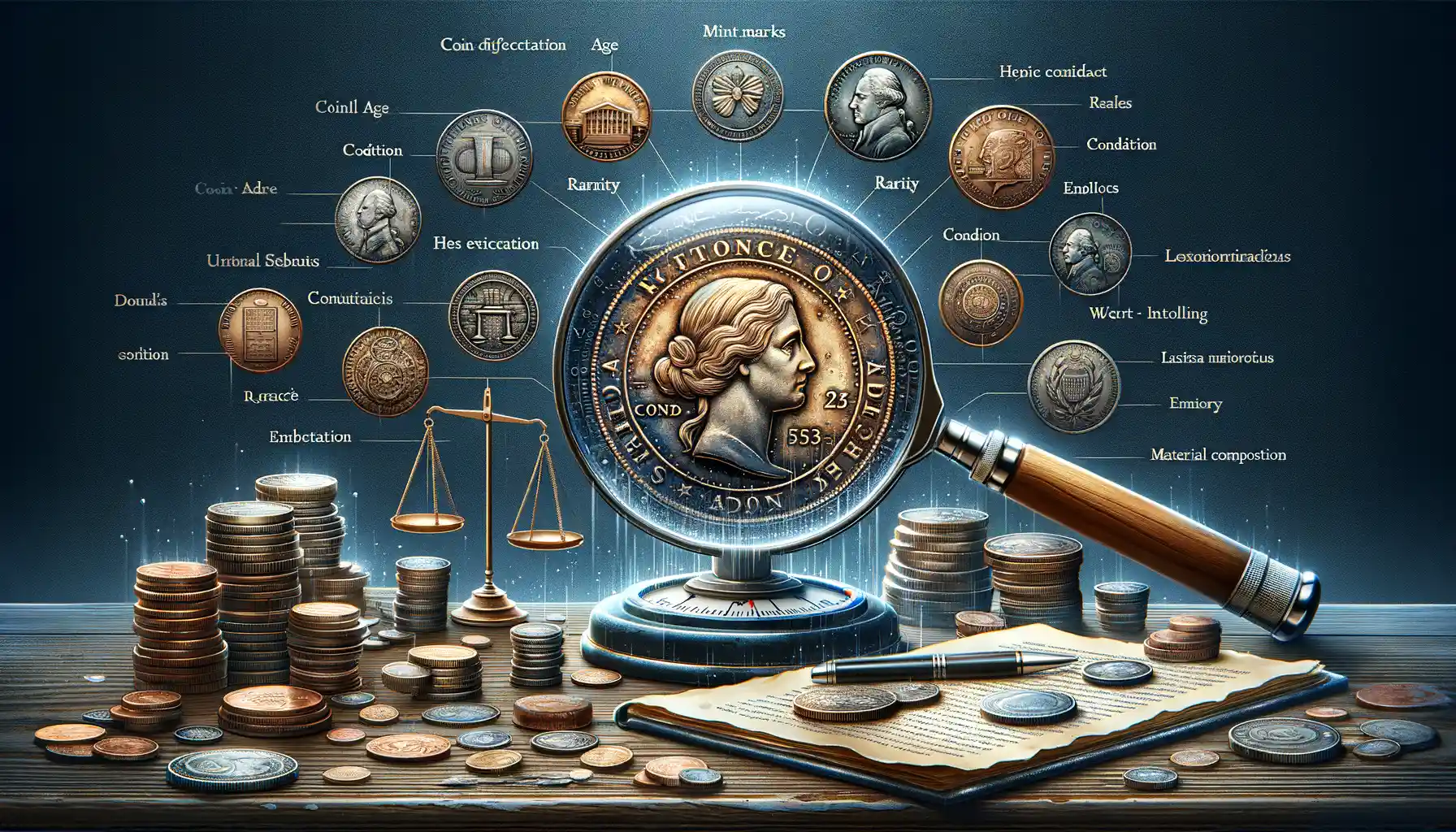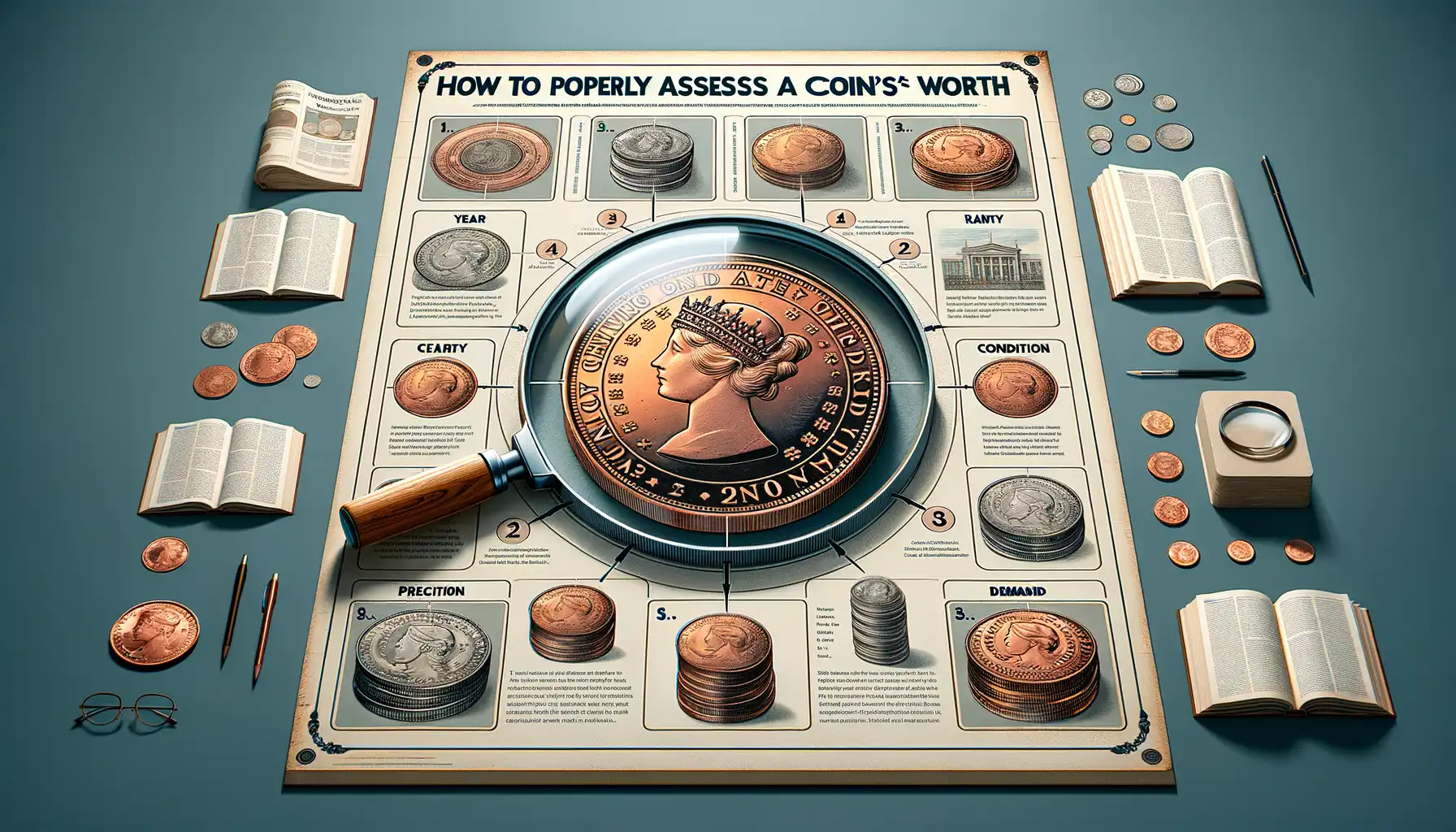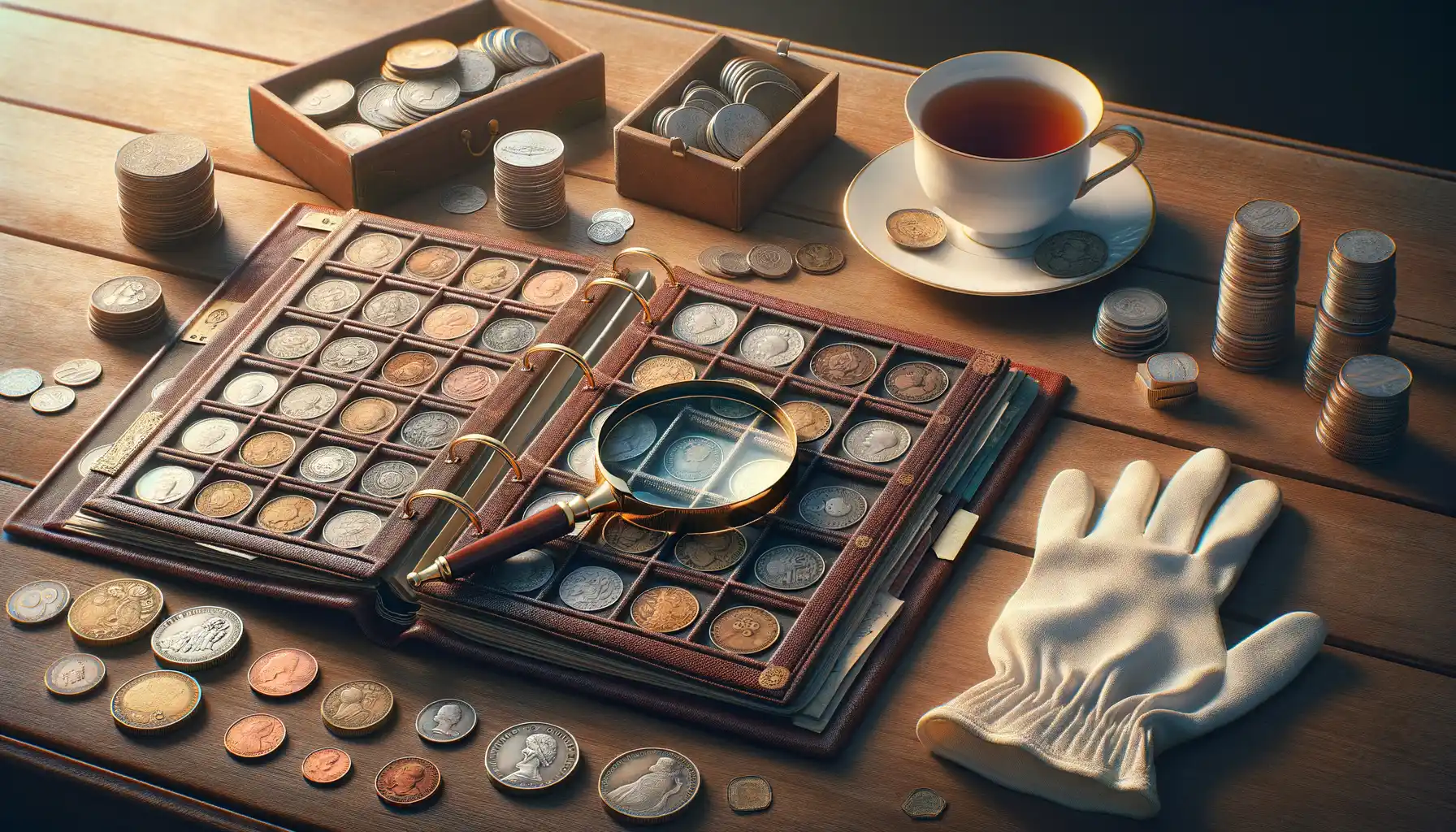Understanding the Basics of Coin Valuation
The Foundation of Understanding Coin Worth
If you’ve ever held a gleaming coin in your hand and wondered, “How much is this actually worth?”—you’re not alone. But here’s the thing: determining coin value isn’t as simple as looking up a price tag. Nope, it’s more like solving a fascinating puzzle with unique pieces.
At the heart of it, a coin’s valuation boils down to three little words: supply, demand, and condition. Imagine a rare vintage car—let’s say a mint-condition 1965 Mustang. Its value skyrockets when there are only a handful of them left, collectors are clamoring for it, and it looks like it just rolled off the showroom floor. Coins are strikingly similar (pun intended).
On your journey to decoding a coin’s worth, here’s what to focus on:
- Rarity: Was this coin minted in limited numbers? Fewer coins equal higher desirability.
- Grade: Are there scratches or wear? A pristine coin can be worth exponentially more than its scuffed-up counterpart.
- Historical significance: Some coins tell a story. If it’s tied to a key moment in history, that adds another layer of value.
Think of each coin as a tiny piece of art, history, and economics rolled into one. Once you grasp these basics, you’ll start seeing coins as more than loose change—each one has its own tale to tell!
Common Misconceptions and Myths

The Allure of Rare Coins: Fact or Fable?
Is rarity the golden ticket to a coin’s worth? Not always! Many believe that if a coin is rare, it must automatically be priceless. The truth? A rare coin no one cares about is like trying to sell ice in the Arctic—demand matters. Take, for instance, a coin minted in small numbers during an uneventful time; its story might lack the intrigue collectors crave, leaving value stagnant despite its rarity.
The same goes for age. A two-century-old coin sounds impressive, right? But if it’s common and lacks historical significance, its value won’t get hearts racing. It’s not just *what* you have—it’s how fascinating its backstory is to the collector world.
Busting Myths About Coin Condition
Another myth? That any old coin in your attic is a hidden treasure trove. Condition plays a starring role in valuation. Collectors often use the “Sheldon Scale” to judge a coin’s grade, and even minor scratches or wear can send value plummeting.
In fact, beware of these misguided beliefs:
- Clean coins are worth more: Cleaning can strip away natural patina, which is crucial for authenticity.
- “Shiny equals valuable”: Some coins gain value precisely because of their aged, weathered look.
Each coin has its own story—and not everything shiny glitters with worth!
Key Factors That Affect Coin Value

Historical Significance and the Stories Coins Tell
Imagine holding a coin that’s silently witnessed revolutions, global trade, or even pirate treasure chests! A coin’s *story* often impacts its worth immensely. The historical context of a piece can push its value sky-high. For instance, a simple penny minted during wartime scarcity might carry more weight than a glittering modern-day replica.
Collectors adore coins linked to pivotal moments—whether it’s a Roman denarius marking Julius Caesar’s reign or a 1943 steel wheat penny from World War II. The idea isn’t just rarity; it’s the heartbeat of history sitting right in your palm.
Condition, Rarity & Material: The Triple Threat
Let’s face it—no one’s excited about a scratched-up, barely-legible coin. Condition holds *immense power* over value, often graded on a precise scale by experts. But don’t stop there! Think about rarity: fewer coins in circulation equals higher demand. And let’s not ignore materials! Coins made of gold or silver inherently carry intrinsic worth, while base metals often need a compelling backstory to shine.
- Is the coin uncirculated? Pristine coins fetch premium prices.
- How scarce is it? Limited mintages are collector goldmines.
- Does its metal content scream “precious”? That’s a guarantee of baseline value.
How to Properly Assess a Coin’s Worth

Look Beyond the Shine
Understanding a coin’s true worth is like peering into its soul—it’s not just about what’s on the surface. Sure, a gleaming coin might catch your eye, but what’s its story? A coin’s value isn’t just tied to its age or appearance; it’s a cocktail of rarity, demand, and the tales it carries from history. For example, that old penny tucked away in your drawer might seem mundane, yet if it’s a 1943 copper penny, you could be staring at a treasure worth thousands.
Condition matters too, but don’t be fooled into thinking spotless equals priceless. Coins with a bit of wear can still hold incredible value, especially if they feature rare dates or unique minting errors. That’s why collectors obsess over details like die cracks, double strikes, or misprints—these tiny flaws can mean big bucks.
Break Down the Details
When assessing a coin’s worth, consider these key factors:
- Historical significance: Does the coin mark an important event or era?
- Mint mark: Those tiny letters (like “D” for Denver) signal where the coin was made, and some are rarer than others.
- Metal content: Is it pure silver, gold, or something more common like nickel?
Think of this process as detective work. The more layers you uncover, the closer you get to revealing a coin’s full story—and value.
Avoiding Pitfalls in Coin Valuation

Steer Clear of Common Missteps
Navigating the world of coin valuation can feel like walking a tightrope—one wrong step, and you might find yourself in a financial tangle or holding onto unrealistic expectations. To save yourself from unnecessary headaches (and heartaches), it’s important to sidestep the common traps that often trip up collectors and newcomers alike.
One major pitfall? Placing too much trust in online photos. A coin might *look* pristine on your screen, but lighting and angles can be deceiving. A true assessment requires examining it in person or through professional-grade images. Trust me, that glimmering “perfect” coin you spotted on a marketplace might not hold up under scrutiny.
Another red flag: ignoring the importance of proper terminology. Terms like “uncirculated” or “proof” aren’t just fancy buzzwords—they’re the gold standard for classifying coins. Misusing them could lead to overpaying or undervaluing your own collection.
Here are a few key things to watch for:
By staying sharp and informed, you’ll dodge these traps and make smarter moves in the exciting world of coin collecting!




